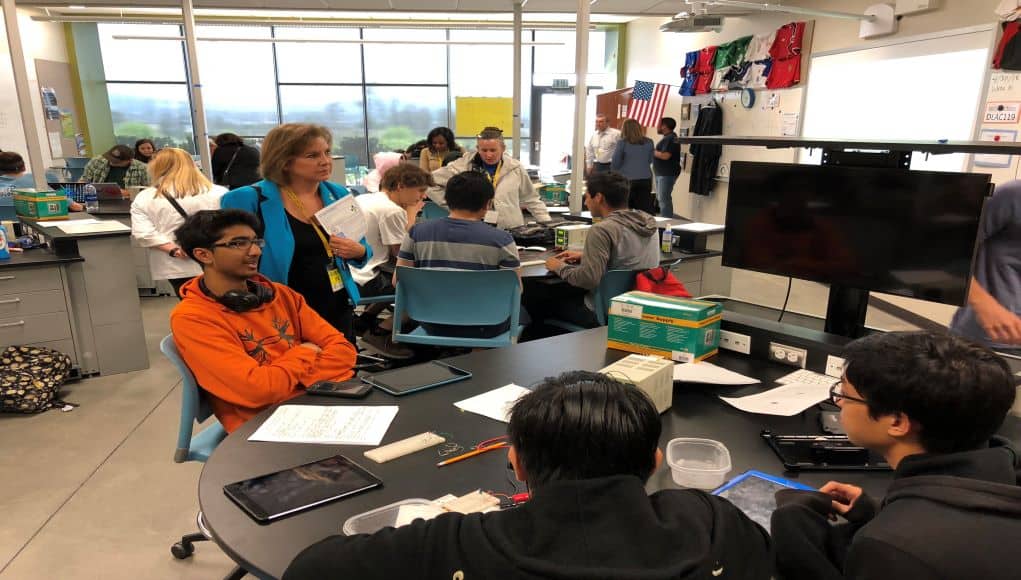How $5 Billion Could Provide a Great Education for Every Kid on Earth

“Exponential technology is changing faster than we are,” said a philanthropic advisor, “how could philanthropy accelerate progress in career readiness?”
With such high challenge, so many restrictions (both policies and traditions), and new demands to be lean and agile, it’s a stretch for public education to respond adequately. The automation economy is likely to produce waves of job dislocation requiring access to upskilling and efficient retraining.
The advisor speculated that with so much new wealth on the sideline there must be ways that philanthropy could accelerate progress. “What if we had $30 billion to put to work, what would you do?”
That’s a big budget! With resources of that size, smart teams could take on the most interesting opportunity of our time–quality elementary and secondary education for every young person on earth.
And, it’s a great time to take on the challenge! In the next six years, another four billion learners will be connected to the web at 5G speed at low cost. AI-powered platforms will make formal and informal learning more powerful and accessible.
Here’s the outline of the first tranche of a big plan to support the development of a great education for every child on the planet–15 investments totaling about $5 billion.
Build Demand: Create broad support for learner-centered models that prioritize new economy skills.
1. New Goals: Support community conversations about the future of work resulting in updated graduate profiles; $50 million would change the conversation in America (as suggested by early progress developed by America Succeeds and Battelle for Kids), $200 million would (start to) change the world.
2. Science of Learning: Support learning science research and its application (as done by
Learner Variability Project, Populace, Turnaround for Children); $200 million would accelerate progress and build demand for powerful and personalized learning experiences.
3. Future of Learning: Target educators with a campaign about the future of learning; help school communities build a shared vision of powerful learning; $50 million would connect a lot of partners and convert a lot of schools worldwide.
Build Supply: Expand access to new learning models.
4. New Schools: Support new school models based on promising design principles (XQ, NGLC funds, CSGF and NewSchools Venture Fund). New schools are a great way to bundle new tools and strategies–and they stick around–but they are slow and expensive to develop, $750 million would support about 500 innovative new (or transformed) schools.
5. Platform Networks: Support development and expansion of innovative platform networks (Brooklyn LAB and Cortex, New Tech Network and Echo, Summit Learning) and help existing networks develop new models (like Achievement First Greenfield Schools).
Platform networks can deliver new schools more quickly and efficiently than startup teams (#4), $500 million might support 500 innovative new schools. Microschool networks like Place Schools that share a platform and back-office services and supports could prove to be even more efficient.
Platform networks that share outcome frameworks (we call them diploma networks like Building 21) have the potential to help schools adopt new goals and learning models and could even help end standardized testing by gaining state waivers based on the quality of their assessment system (and that will eventually require an update to federal policy).
6. Dual Enrollment: Support development of more early college high schools (in supportive state networks that ensure credit and money transfer) where students can earn an AA degree with their high school diploma. Add business partnerships and work experiences and you have P-tech networks that connect young people to real employment opportunities, $250 million could more than double access to programs.
7. Innovative Low-Cost Private Schools. Boost next-gen private and homeschool supply with school networks like Acton Academy and co-learning spaces like Workspace Education; $250 million would change the landscape in America.
Bridge International Academies in Sub Saharan and West Africa and SPARK Schools in South Africa are rapidly expanding access to quality education; another $500 million invested would change the landscape in Africa and India.
8. Job Training. Rapid training for high wage high demand employment (free or debt free argues Ryan Craig) should be available to everyone. This could start in career-ready high schools. Craig argues that a hard sprint to a good first job will replace a big chunk of HigherEd; $500 million could kick-start a dozen global bootcamps (like Andela) and leadership programs (like African Leadership Academy).
9. Out of School: While building the supply of quality schools, there is tremendous opportunity to expand access to high quality out of school learning. As competency systems expand, out of school learning options will expand and connect; $250 million would unlock opportunity (like LRNG) and build youth agency through community contribution (like One Stone in Boise).
Build Infrastructure: While not as visible as new school funding, infrastructure and capacity are key to scaling quality options.
10. Developing Economy EdTech Ecosystems. A new Omidyar EdTech report outlines the “leapfrog potential” for technology enabled learning models in developing economies. They recommend supporting healthy EdTech ecosystems particularly business models that reach the most marginalized with both capital and counsel. Omidyar has invested $150 million in efforts to improve global education ecosystems. Widespread progress would take $500 million.
11. Measures of Competency. Sponsor competency systems that measure and communicate stages of development and replace courses and seat time as the primary architecture for secondary and postsecondary education; $100 million would kick start a few scalable models.
12. Promote Interoperability. While learners get more formative feedback it doesn’t easily combine into an accurate composite view. The sector is trapped in business models based on vendor ownership of item-level data. In addition to building user demand (with campaigns like Project Unicorn), new standards agreements and pilots of new business models could be launched for $150 million.
13.Hard to Measure Skills. Support definitions and assessments of critical life and work skills including social and emotional learning; $250 million would support several assessment systems and a large number of pilot programs worldwide.
14. Learner Profiles. Comprehensive learner profiles and portfolios are key to unlocking the potential of personalized learning and helping learners communicate their capabilities and aspirations. Learner profiles will extend the AI-driven talent revolution that started in 2017 (listen to Michael Moe’s discussion). By taking advantage of continuous background assessment, learner profiles will kill standardized testing. A half a dozen regional pilots launched with community support and data privacy will cost more than $500 million.
15. Advisory Systems. With more learning decisions and more secondary and postsecondary options guidance is more important than ever. Guidance systems should monitor academic and social development, recommend learning options, and inform learners of career and post secondary options; $250 million would support several new platforms that would provide personalized and localized support to learners worldwide.
Conclusion
While $5 billion sounds like a lot, it’s less than a tenth of what US foundations spend annually and there is a lot of new wealth on the sidelines.
Talent development is not specifically mentioned above but it’s obviously important. I’m a fan of model specific preparation, so a substantial portion of the $2.5 billion in the supply section would be devoted to talent development. One could persuasively argue for another $1 billion in the infrastructure category focused on preparation and development.
Investments of the last 20 years have demonstrated that it is challenging to use philanthropy (and public policy) to spur education innovation and improvement. But the historical success of new school development and the potential of developing learning experiences on powerful new platforms in a connected world makes the next five years a unique opportunity in history.
For more see:
- New School Formula: Harder Problems and Fewer Answers
- Bending the Arc of Human Potential
- Now That Schools Are Promoting Broader Definitions of Success, How Do We Measure Progress?
Stay in-the-know with innovations in learning by signing up for the weekly Smart Update. This post includes mentions of a Getting Smart partner. For a full list of partners, affiliate organizations and all other disclosures please see our Partner page.
This post was originally published on Forbes.




karishma grover
I was going through this blog and it really help me to understand how can we a better learning for students and bending education with technology for better result.